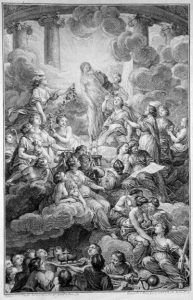24 INTRODUCTION TO THE 18th CENTURY
The 18th century is often called both the Age of Enlightenment and the Age of Revolutions due to its transformative changes driven by new political ideas and technological advancements. People built on the discoveries of the Scientific Revolution, which demonstrated that human reason could explain the natural world.. Scientists like Sir Isaac Newton had already demonstrated in the 17th century that natural laws, such as gravity, governed the universe. By the late 17th and early 18th centuries, thinkers began applying reason to human societies and politics. During this period, Olaudah Equiano, an African abolitionist, made significant contributions through his 1789 autobiography, which exposed the brutal realities of slavery and helped advance the abolitionist movement.
Philosophers such as John Locke in England and Voltaire in France questioned the idea that kings ruled by divine right. They argued that political power should come from the people and that everyone had “natural rights” due to their humanity. Though Enlightenment thinkers had differing views, they were united in their belief that reason could lead to societal improvement.

The late 18th century also saw significant changes driven by Enlightenment ideas and advancements from the Scientific Revolution. Adam Smith’s 1776 book, The Wealth of Nations, challenged mercantilism and advocated for a free market with minimal government interference. Technological innovations, such as the steam engine, enabled the factory system, revolutionizing production. Previously handmade goods could now be mass-produced and efficiently transported by steam-powered railroads and ships. The Industrial Revolution, which began in England in the late 18th century, spread to other nations in the 19th century.
By the century’s end, these changes had reshaped many aspects of life. Political revolutions in the Americas and Europe offered new opportunities for self-governance. The factory system shifted populations from rural areas to cities and transformed economies with wage labor. Despite these advances, many people faced ongoing challenges. The African slave trade forcibly displaced over six million Africans, while Indigenous peoples in the Americas continued to suffer from European expansion. Women around the world remained oppressed and denied political and legal rights despite the era’s revolutionary changes. The Industrial Revolution improved production but deepened economic inequality, with the rich growing wealthier and the poor experiencing increased hardship.
This Section of the book will explore these themes in depth, starting with a global overview of the 18th century, including key rulers, cultural trends, and developments that impacted people’s lives. We will then examine the political and social effects of the Enlightenment and the Industrial Revolution, focusing on how Enlightenment ideas inspired major revolutions like the American, French, and Haitian Revolutions, despite their varied outcomes.
